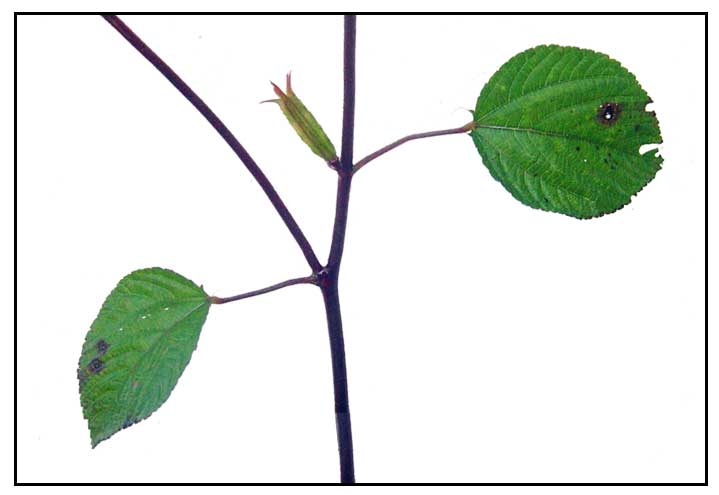| Gen
info
Corchorus is a genus
plant of about 40-100 species in the family Malvaceae. Jute is confusingly
applied to any plant of the genus Corchorus and to its fiber. The chief
sources of the fiber are the two species of Corchorus plant: C olitorius
and C capsularis. In the Philippines, three Corchorus species
are recorded with medicinal uses: Pasau, Pasau na bilog,
and pasay na hapa. Another pasau, Pasau-na-hapai, Jussiaea
erecta belongs to the family Onagraceae.
Botany
· Erect, branched, smooth half-woody shrub, 1 to 1.5 meters high.
Leaves are ovate-lanceolate, 4 to 12 cms long, pointed at the tip, blunt
at the base with taillike projections and toothed margins. Flowers are
axillary, yellow, ab out 6 mm long. Capsules are elongated, cylindric,
about 3 to 3.5 cm long with 10 ribs, with transverese partitions between
seeds. Seeds are dark, bluish green, angular, about 2 mm and very bitter.
Distribution
Rice paddy banks, in fallow
paddies throughout the Philippines.
Chemical
constituents and properties
Leaves are demulcent,
tonic, diuretic.
Young shoots an excellent source of iron, calcium and phosphorus,
vitamins B and C.
Parts
utilized
· Whole plant utilized. Collect from April to September.
· Wash, cut into whole pieces, dry under the sun.
Uses
Folkloric
· Seeds used as
purgative
· Infusion of leaves used as tonic and febrifuge.
· Cold infusion of leaves used after dysentery to improve the
appeties and strength.
· In dysentery, grains of the powder mixed with Curcuma longa
for dysentery. ulcer.
· Powdered seeds with honey and giner for diarrhea.
Nutrition
Used as a vegetable; in
the Philippines, especially by the Ilokanos.
Availability
Wild-crafted. |





